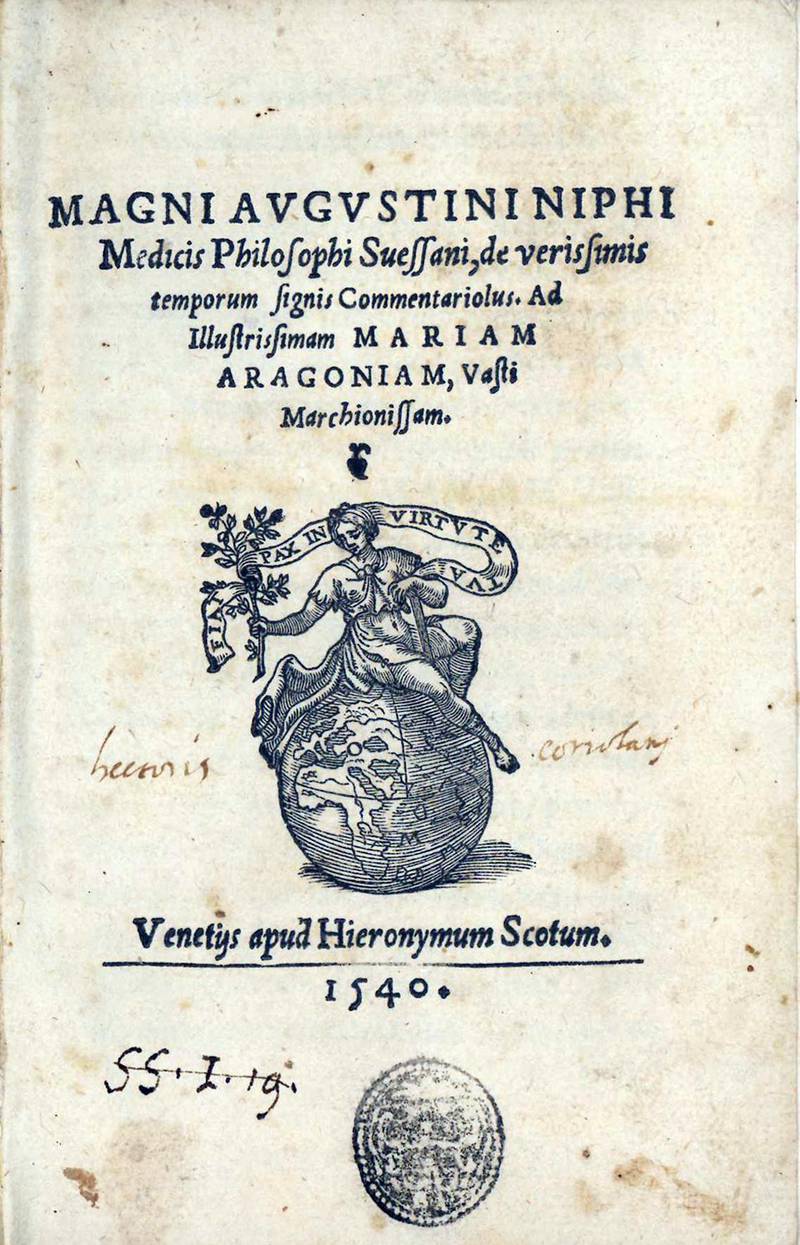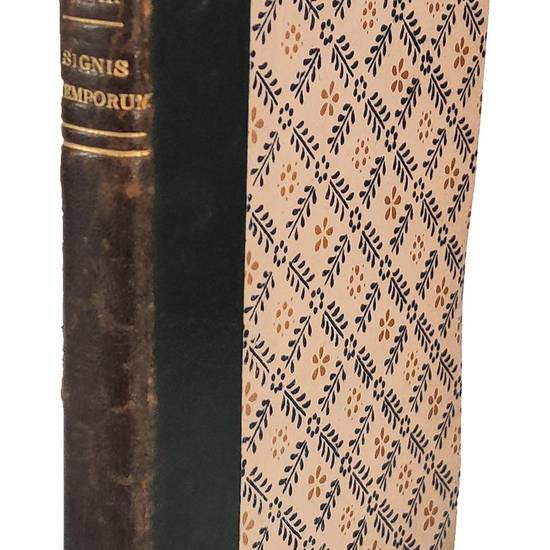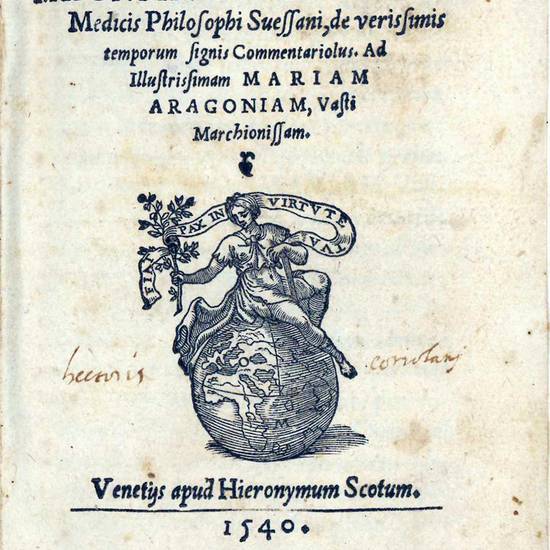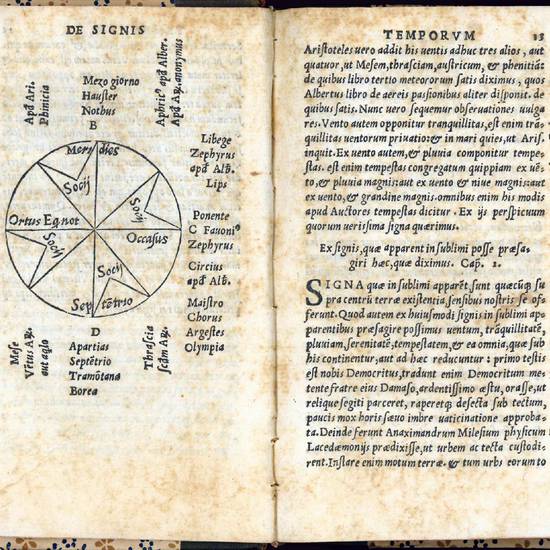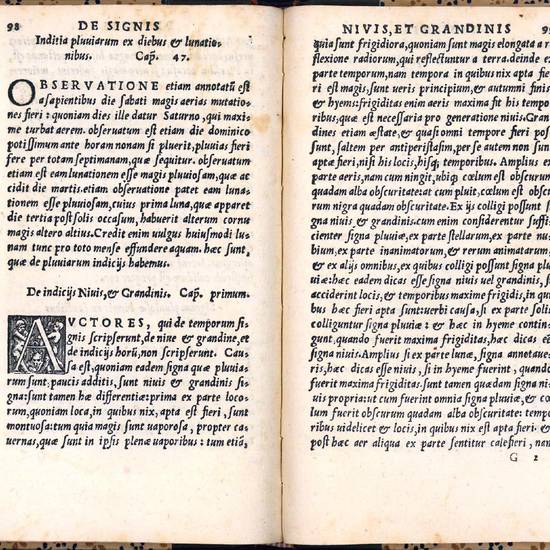METEOROLOGY
8vo (151x98 mm). 143, [1] pp. Collation: A-I8. Later half calf, gilt title on spine, marbled edges. Printer's devices on title page and last leaf verso. Woodcut initials. With a woodcut diagram on p. 12. On the second front flyleaf is a corroded unreadable manuscript note, on the title page there are an ownership's entry “hectoris coriolani”, an inked-out shelf mark and an old stamp. Some foxing and browning.
First edition, dedicated to Mary of Aragon, of one of the earliest printed works on meteorology and weather forecasting, and the earliest by an Italian author. The treatise was actually written in 1526 and opens with a letter from Cardinal Pompeo Colonna to Nifo, containing the author's praises.
The first part of the work deals with the weather in general, the second, divided into 25 chapters, is dedicated to the signs of good weather, while the 45 chapters of the third part are about the rain. Then follow De signis Nivis, et Grandinis (‘On the signs of snow and hail', 1 chapter), De signis Ventorum (‘On the signs of wind', 25 chapters), De signis Diluviorum (‘On the signs of deluges', 3 chapters, partly dedicated to floods and earthquakes), and finally De signis Fertilitatis, atque Inopiae (‘On the signs of fertility and famine', 3 chapters on the revolution of fertility and scarcity).
The work is based largely on the authority of ancient authors, in particular Pliny, Theophrastus, Aratus, Virgil, and Alexander of Aphrodisias, as well as on some medieval authors such as Bede, Averroes, and Albertus Magnus. But there are numerous chapters and judgments that are utterly original: for example, Nifo curiously explains how he can predict weather variations from the belly pains and appetite of his dog, Falcon, and how his rectum is an excellent atmospheric indicator.
The volume was already rare at the beginning of the seventeenth century, if it is true that Paolo Minerva, author of De praesagiendis temporum mutationibus (Naples, 1616), took 12 years to obtain a copy of Nifo's treatise.
Agostino Nifo, a native of Sessa, was one of the greatest philosophers and scientists of his time. He studied in Padua, then he taught in Rome, Pisa, Salerno, and Naples. He was one of the favorites of Pope Leo X, who appointed him Count Palatine. He wrote important commentaries to almost all the works of Aristotle, which he translated personally.
Riccardi, II, 201; Casanatense, 903; Thorndike, VI, 486-487; G. Hellmann, Versuch einer Geschichte der Wettervorhersage im XVI Jahrhunderts, in: “Adhandlungen der preuss. Akad. d. Wiss.”, I, 1924, p. 49.
[10381]

